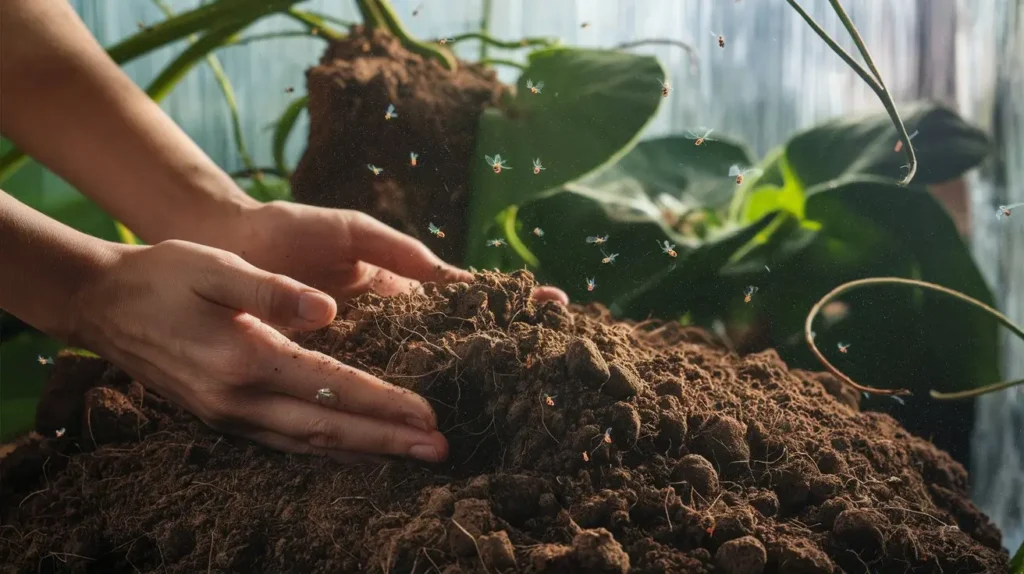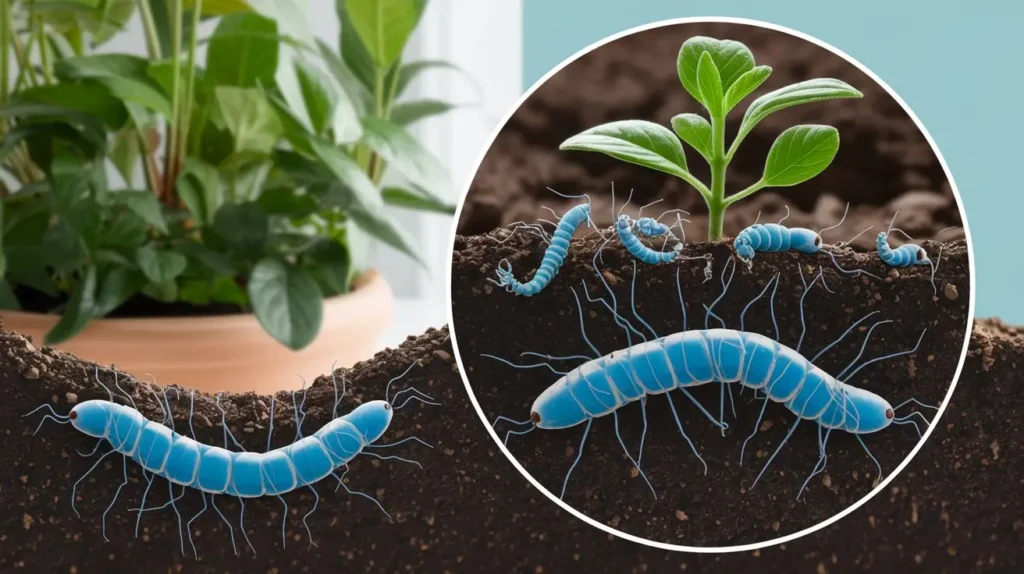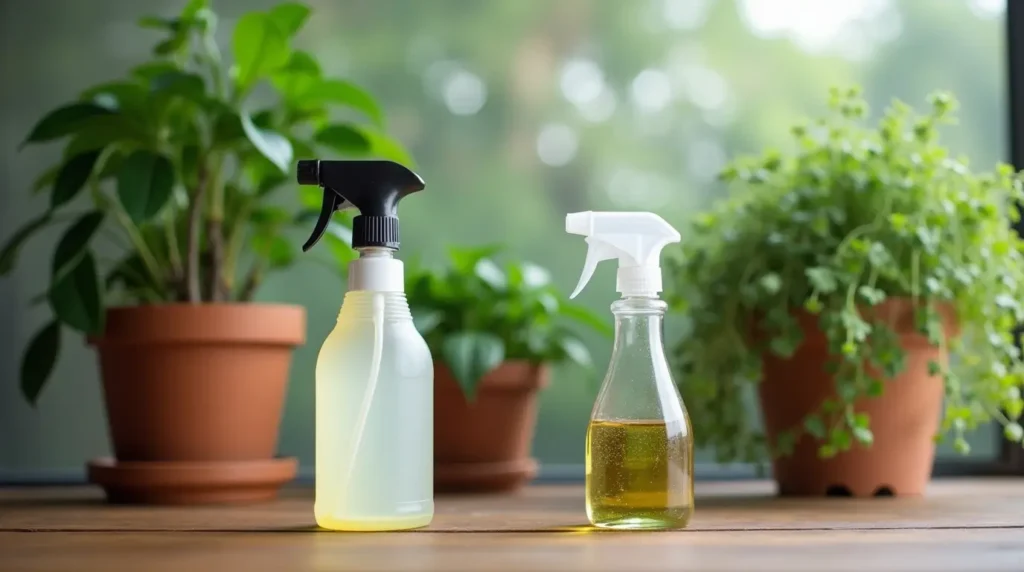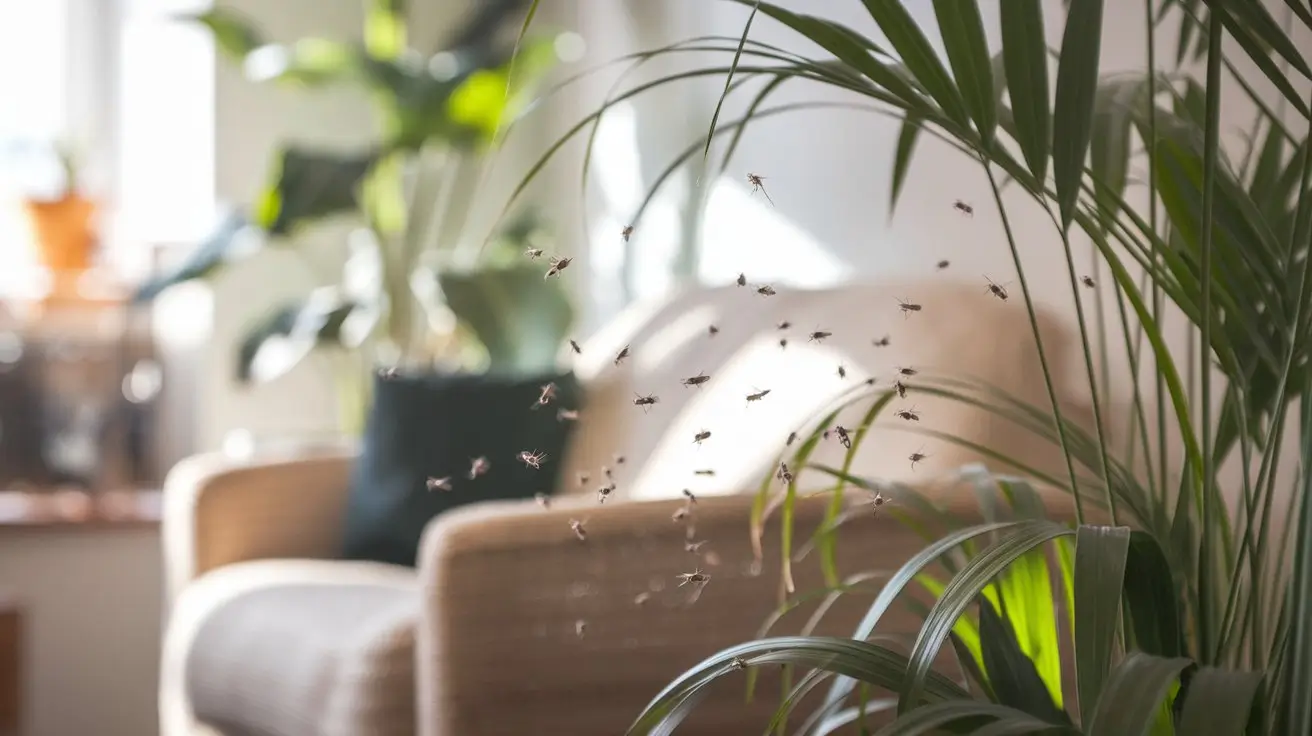How to Get Rid of Gnats in Plants with Proven Solutions.
Picture this: you’ve just brought home a beautiful new houseplant, carefully positioned it in the perfect spot with just the right amount of sunlight, and felt a sense of pride in your growing indoor garden.
But soon after, you notice tiny, buzzing insects flitting around your plant. They’re gnats, and they’re now sharing your space. If this scenario sounds all too familiar, you’re not alone.
Many plant lovers face the challenge of gnats invading their beloved plants, turning what should be a peaceful sanctuary into a pest-infested nightmare.
But don’t worry—this is where we step in to help. If you’ve been searching for ways to eliminate gnats in your plants, you’ve come to the right place. In this article, we’ll dive into practical and proven methods on how to get rid of gnats in plants, so your greenery can thrive without the pesky disturbance.
From understanding the problem to implementing simple solutions, we’ve got all the information you need to reclaim your plant paradise. So, let’s get started on how to get rid of gnats in plants for good and keep your indoor garden pest-free!
What Are Gnats and Why Do They Love Your Plants?

If you’re asking how to get rid of gnats in plants, the first step is understanding what these little pests are and why they seem to thrive in your plant pots.
Gnats, particularly fungus gnats and root gnats, are small, winged insects that are often drawn to indoor plants. While their presence can be bothersome, understanding them can help you tackle the issue more effectively.
Types of Gnats
When dealing with gnats in plants, it’s important to know which type you’re up against. The most common types of gnats that infest plants are fungus gnats and root gnats.
- Fungus Gnats: These are the most common culprits. Fungus gnats thrive in moist soil, where their larvae feed on the roots of plants and decomposing organic matter. These gnats can be identified by their tiny size and dark color. They tend to hover around the soil of potted plants.
- Root Gnats: Similar to fungus gnats, root gnats also lay their eggs in the soil. Their larvae, however, tend to be more aggressive in attacking plant roots, which can damage your plants significantly. The adults look quite similar to their cousins, the fungus gnats.
- Other Gnats: While fungus and root gnats are the most common, you might also encounter other pests, like fruit flies or soil gnats. These gnats are typically less damaging but still a nuisance when you’re trying to keep your plants healthy.
Why Do Gnats Love Your Plants?
So, why do gnats love your plants so much? It’s all about the conditions they find in your pots. The main attraction for gnats is moist soil, decaying organic matter, and high humidity.
These are the ideal breeding grounds for gnats to lay their eggs and for their larvae to feed. Here’s why:
- Moist Soil: Overwatering your plants can create a perfect environment for gnats to thrive. Gnats are attracted to damp, soggy soil where they can lay their eggs. The moisture provides a fertile ground for the larvae to grow.
- Decaying Plant Matter: Gnats are also drawn to decaying organic material, such as fallen leaves or rotting roots. As the plant decomposes, the gnats find it easy to breed in the rich, decomposing environment.
- High Humidity: High humidity is another reason gnats tend to invade plants. A humid environment mimics the conditions that these pests thrive in. When the air around your plants is too damp, gnats will often take up residence and multiply rapidly.
If you’ve ever wondered how to get rid of gnats in plants, knowing that they thrive in these moist conditions is the first step in making your plants less appealing to them.
Signs of a Gnat Infestation
Before diving into how to get rid of gnats in plants, it’s essential to know how to spot an infestation early on. Gnats are often more of an annoyance than a severe threat, but if left untreated, they can cause damage to your plants.
Here are some signs that gnats have taken over your plant:
- Tiny Flies Around Your Plants: The most obvious sign of a gnat infestation is the presence of small, dark flies buzzing around your plants. Fungus gnats are especially active around the soil and often fly in circles when disturbed.
- Yellowing Leaves: As gnat larvae feed on your plant’s roots, they can cause damage, which leads to yellowing or wilting leaves. If your plant is looking unhealthy, gnats may be the cause.
- Soil Discoloration: If you notice tiny holes or discoloration in the soil surface, it could indicate that gnat larvae are feeding below the surface. These larvae will often eat plant roots, leading to overall plant health issues.
- Visible Larvae: If you check the soil closely and see small, worm-like larvae crawling near the surface, you’ve likely got a gnat infestation. The larvae feed on the organic matter in the soil, often damaging the roots in the process.
Why You Need to Know This:
Knowing the type of gnat you’re dealing with and the signs of an infestation can help you better understand how to get rid of gnats in plants.
If you spot the problem early, you can quickly implement a solution before the pests cause significant damage. The more proactive you are in recognizing these signs, the easier it will be to control the infestation and get back to enjoying your healthy, gnat-free plants.
Data and Studies:
Studies show that overwatering is a primary cause of gnat infestations in indoor plants. According to a study published by the University of Florida, fungus gnats thrive in excessively wet environments, making overwatered plants the perfect breeding ground.
This research emphasizes that maintaining a balance in watering habits is one of the most effective preventative measures to control gnats.
Another important takeaway from studies is the role of organic matter in attracting gnats. In fact, research from Cornell University suggests that decaying plant material and untreated compost can increase the likelihood of gnat infestations.
This data points to the importance of regularly cleaning the soil surface and removing any dead plant material to prevent gnats from settling in.
With this understanding, you’re well-equipped to identify gnats in your plants and understand why they are drawn to your indoor garden.
But what’s next? Now, let’s move on to discovering how to get rid of gnats in plants with proven, effective methods. Stay tuned for the next sections where we’ll cover everything you need to tackle these pests head-on!
Effective Strategies to Get Rid of Gnats in Plants
Dealing with gnats in your plants can be frustrating, but there are several proven strategies to rid your indoor garden of these pesky insects.
From simple adjustments to the way you care for your plants to natural remedies, here’s how to get rid of gnats in plants effectively and permanently.
1. Let the Soil Dry Out
One of the main reasons gnats thrive in indoor plants is overwatering. Moist, damp soil creates the perfect breeding ground for these pests.
So, how to get rid of gnats in plants starts with adjusting your watering habits. By allowing the soil to dry out between waterings, you can disrupt the gnat lifecycle and reduce the conditions they need to survive.
Why letting the soil dry out works:
- Prevents breeding: Gnat larvae thrive in wet environments. Drying out the soil deprives them of the moisture they need to grow.
- Improves root health: Overwatering doesn’t just attract gnats; it can also harm your plant roots. Allowing the soil to dry out properly encourages healthy roots and discourages pests.
Best watering practices to avoid future infestations:
- Make sure your pots have drainage holes: Proper drainage allows excess water to escape, preventing the soil from staying too wet.
- Use a moisture meter: Invest in a moisture meter to accurately measure soil dampness before watering. This will help you avoid overwatering and minimize the risk of attracting gnats.
By letting the soil dry out properly and maintaining good watering practices, you’ll significantly reduce the chances of gnat problems in the future.
2. Use Sticky Traps
Sticky traps are one of the simplest and most effective ways to catch adult gnats and reduce their numbers in your plant pots. These yellow traps attract adult gnats, trapping them on the sticky surface.
How sticky traps help:
- Attracting gnats: Gnats are naturally drawn to the yellow color, which mimics the flowers and plants they seek out. Once they land on the trap, they’re stuck.
- Reducing adult populations: Catching adult gnats helps reduce the number of new eggs laid in the soil, breaking the cycle of infestation.
Placement for maximum effectiveness:
- Near affected plants: Place sticky traps close to the plants that are most affected by gnats. Position them near the soil or in areas where gnats tend to hover.
- In high-traffic areas: If you’re unsure where the gnats are concentrated, place traps in several places around your plants.
Typically, you’ll start to see results within a few days to a week, depending on the severity of the infestation.
3. Natural Solutions: Neem Oil and Essential Oils
When it comes to how to get rid of gnats in plants, natural solutions like neem oil and essential oils are an excellent choice. These oils act as natural insecticides, targeting gnats and other pests without harming your plants.
Neem Oil:
- How it works: Neem oil contains compounds that disrupt the gnat lifecycle, preventing larvae from developing into adults. It also acts as a repellent for adult gnats.
- Application: Mix a few teaspoons of neem oil with water in a spray bottle and apply it directly to the soil and leaves of your plants. Repeat this process once a week or as needed until the infestation is under control.
Other Essential Oils:
- Lavender, peppermint, and eucalyptus oils: These oils can be used as natural repellents against gnats. Simply mix a few drops with water and spray onto the affected areas.
- How to use them: You can either spray the solution onto the soil or the plant’s leaves, or use it to wipe down the edges of the pot.
Studies have shown that neem oil is effective at reducing gnat populations in houseplants, as it targets both larvae and adults, making it a two-in-one solution to the problem.
4. Beneficial Nematodes: Nature’s Secret Weapon

One of the most natural and effective ways to eliminate gnats in plants is by using beneficial nematodes. These microscopic worms target gnat larvae in the soil and can effectively reduce their numbers.
What are nematodes?
- How they help: Nematodes are beneficial organisms that parasitize and kill gnat larvae in the soil. By applying them to the soil, you’re introducing natural predators to the pests that have been invading your plants.
- How to use them: You can buy nematodes at garden centers or online. Mix them with water and apply the solution to the affected soil. They will naturally seek out and eliminate gnat larvae.
Pros and Cons:
- Pros: Beneficial nematodes are safe for your plants, pets, and the environment. They’re a natural solution that helps maintain a balanced ecosystem in your indoor garden.
- Cons: Nematodes need to be applied carefully, as they are sensitive to extreme temperatures and drying out.
By using nematodes, you’re creating a sustainable solution to how to get rid of gnats in plants, without resorting to harsh chemicals.
5. Repot Your Plants
If you have a severe gnat infestation, sometimes the best way to deal with it is to repot your plants. Repotting can help you replace the infested soil, removing most of the gnat larvae in the process.
When and why repotting is a good strategy:
- When the infestation is severe: If sticky traps and neem oil haven’t worked, repotting gives you a fresh start by removing contaminated soil and pests.
- Proper cleaning: When repotting, be sure to clean the roots gently, removing any visible larvae or eggs.
Steps to repot:
- Clean your pots thoroughly: Sterilize the pot with a mixture of water and mild bleach to ensure you’re not reintroducing pests.
- Replace the soil: Choose fresh, well-draining soil that is pest-free. Sterilizing new soil before use can further reduce the risk of new infestations.
After repotting, remember to water your plant carefully and follow the other tips mentioned above to avoid attracting gnats again.
Preventing Future Gnat Infestations in Your Plants
Once you’ve successfully dealt with gnats in your plants, it’s time to think about prevention. Keeping your plants free from gnats requires maintaining good plant care habits and creating an environment that’s less appealing to pests.
1. Improve Air Circulation and Humidity Control
Gnats love humid, stagnant environments, so improving air circulation and controlling humidity can go a long way in keeping them away from your plants.
- Increase airflow: Place fans near your plants to create gentle air circulation. This reduces the stagnant, humid air that gnats thrive in.
- Use dehumidifiers: If your home is overly humid, a dehumidifier can help reduce moisture levels and create an environment that’s less hospitable to gnats.
- Proper plant placement: Avoid crowding your plants together and ensure that they have room for air to circulate.
2. Maintain a Clean Growing Environment
Regularly cleaning your plants’ surroundings is an easy way to keep gnats at bay.
- Remove dead plant matter: Fallen leaves and decaying plant material can attract gnats. Make it a habit to clean around your plants regularly.
- Clean pots and trays: Ensure that the pots, trays, and surrounding areas are free from organic debris.
By keeping your growing environment clean, you’ll make it much harder for gnats to establish a foothold.
Are Chemical Solutions Necessary?

If natural methods aren’t working and your gnat problem persists, you may be wondering if chemical solutions are necessary. While chemical pesticides can be effective, they should be used with caution.
- When to use them: If you’re dealing with a large-scale infestation and other methods haven’t worked, chemical treatments may be your last resort.
- Risks and considerations: Chemical pesticides can harm beneficial insects, plants, and pets. Always read labels and apply them carefully.
- Best practices: Use targeted treatments, avoid overuse, and make sure the pesticide is safe for indoor plants.
How to Get Rid of Gnats in Plants: Quick Recap
To wrap things up, here’s a quick summary of how to get rid of gnats in plants:
- Let the soil dry out to disrupt the gnat lifecycle.
- Use sticky traps to catch adult gnats.
- Try neem oil or essential oils for natural pest control.
- Introduce beneficial nematodes to target gnat larvae.
- Repot your plants to remove infested soil and pests.
Regular care and proper plant maintenance are key to preventing future infestations. By following these steps, you’ll be well on your way to a gnat-free indoor garden!
Conclusion: Enjoy Gnat-Free Plants Again!
By now, you should have a solid understanding of how to get rid of gnats in plants and the strategies that work best.
The key takeaway here is that with persistence and the right approach, it is absolutely possible to eliminate gnats from your indoor garden.
It’s important to remember that plant care is a journey—don’t be discouraged by a temporary gnat problem!
With proactive habits like regular watering checks, using natural repellents, and maintaining a clean growing environment, you’ll not only eradicate the current pests but also prevent future infestations.
The road to a healthy, gnat-free plant sanctuary might require some time and effort, but your plants will thank you for it.
With the strategies outlined here, you’re more than equipped to take control and keep your plants thriving without the nuisance of gnats.
FAQ Section: How to Get Rid of Gnats in Plants
Q1: How can I tell if I have gnats in my plants?
Answer: If you’re noticing tiny flies hovering around your plants, there’s a good chance you have gnats. Additionally, take a look at the soil—gnat larvae can often be seen when you disturb the dirt.
Keep an eye out for adult gnats buzzing near your plants and inspecting the soil for any larvae.
Q2: Can I get rid of gnats in my plants without using chemicals?
Answer: Absolutely! There are plenty of natural methods that can help you get rid of gnats in plants without resorting to chemicals.
Try using sticky traps to catch adult gnats, or neem oil to repel both adults and larvae. These natural methods are both effective and non-toxic.
Q3: How long will it take to get rid of gnats in plants?
Answer: The time it takes to get rid of gnats in plants varies depending on the method you’re using. Generally, with persistence and the right approach, you should see noticeable results within 1-2 weeks. Stick with your plan, and you’ll soon have a gnat-free plant collection.
Q4: Are there any preventative measures to keep gnats from returning?
Answer: Yes! To prevent gnats from returning, avoid overwatering your plants and make sure the soil has proper drainage.
It’s also important to maintain good air circulation in the room to keep humidity levels in check. Regularly clean the surrounding areas and remove any dead plant matter, which can attract gnats.
Table: Quick Comparison of Gnat Control Methods
| Method | Effectiveness | Ease of Use | Time to See Results | Natural Option? |
|---|---|---|---|---|
| Drying Out Soil | High | Easy | 1-2 weeks | Yes |
| Sticky Traps | Moderate | Very Easy | A few days | Yes |
| Neem Oil | High | Moderate | 1-2 weeks | Yes |
| Beneficial Nematodes | High | Moderate | 1-2 weeks | Yes |
| Repotting Plants | High | Challenging | Immediate | Yes |
| Chemical Solutions | High | Easy | Immediate | No |
Final Thoughts on How to Get Rid of Gnats in Plants
Eliminating gnats from your plants doesn’t have to be a frustrating or overwhelming experience. By consistently applying the right methods—whether it’s drying out the soil, using sticky traps, or introducing natural remedies like neem oil or nematodes—you’re well on your way to a gnat-free garden.
Stay consistent, keep up with your plant care routine, and your indoor oasis will thrive without the annoyance of gnats.
The key to long-term success is ensuring the health and maintenance of your plants while preventing future infestations.
Keep the environment dry, clean, and properly ventilated, and you’ll find that your plants can grow happily without being bothered by these tiny pests. Here’s to keeping your green space free from gnats and full of thriving plants!

